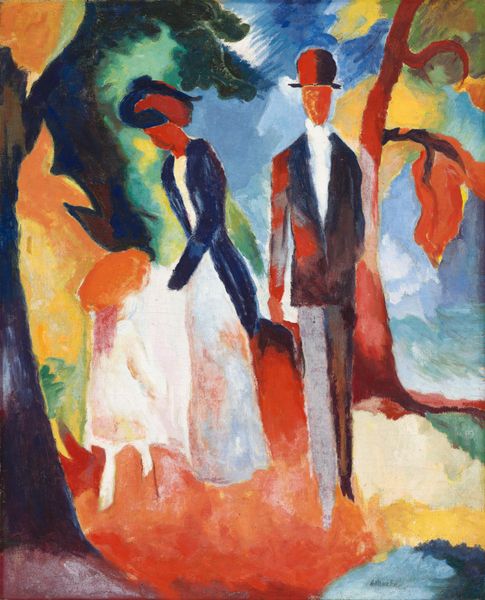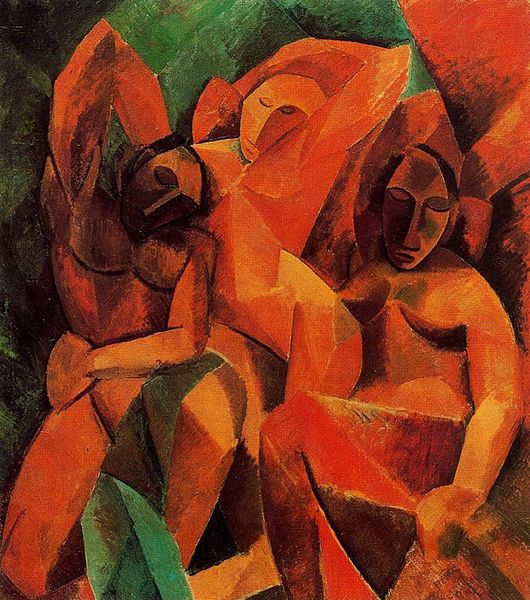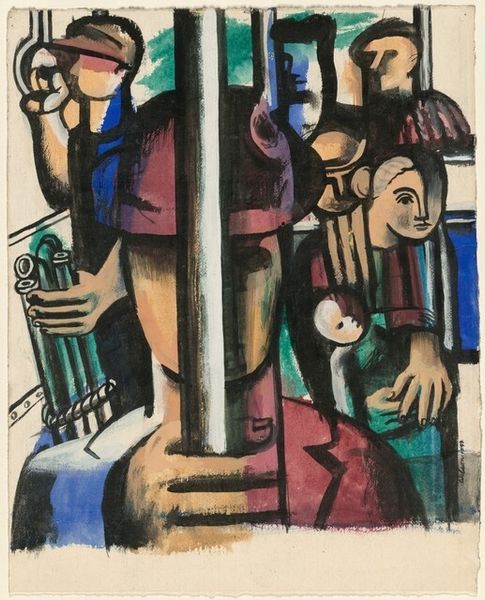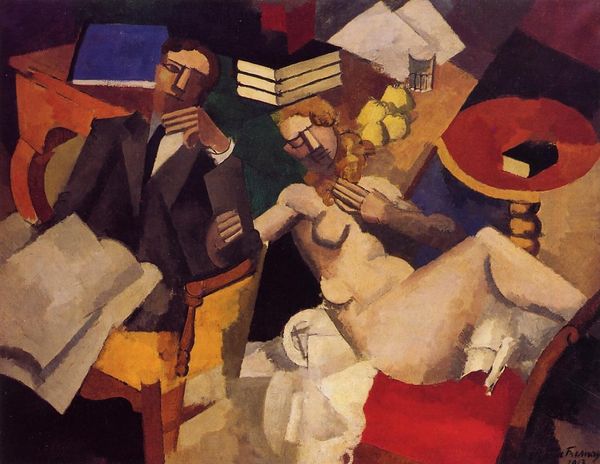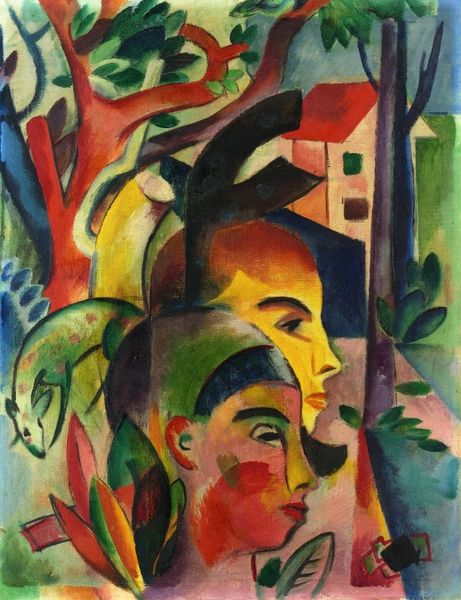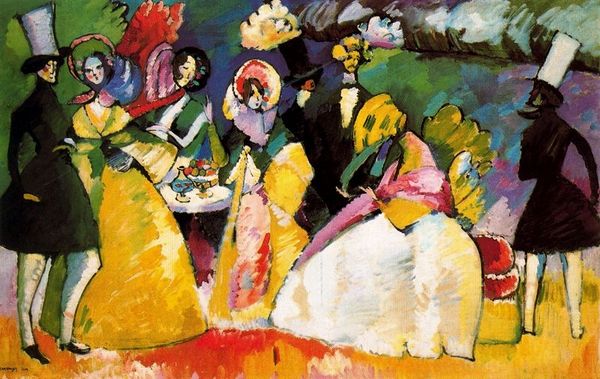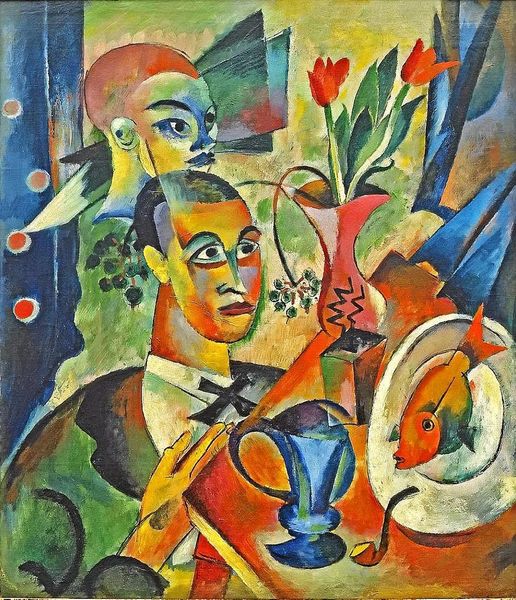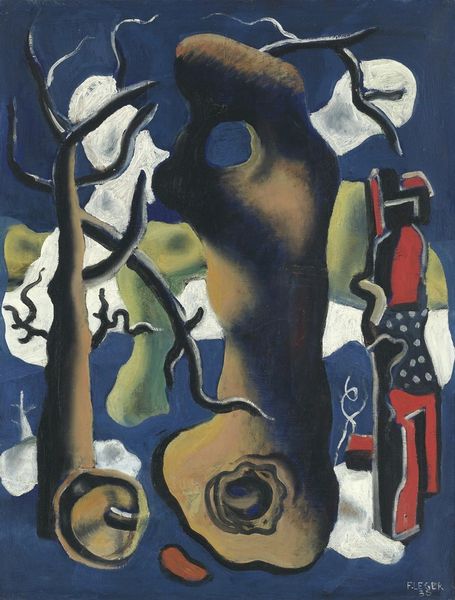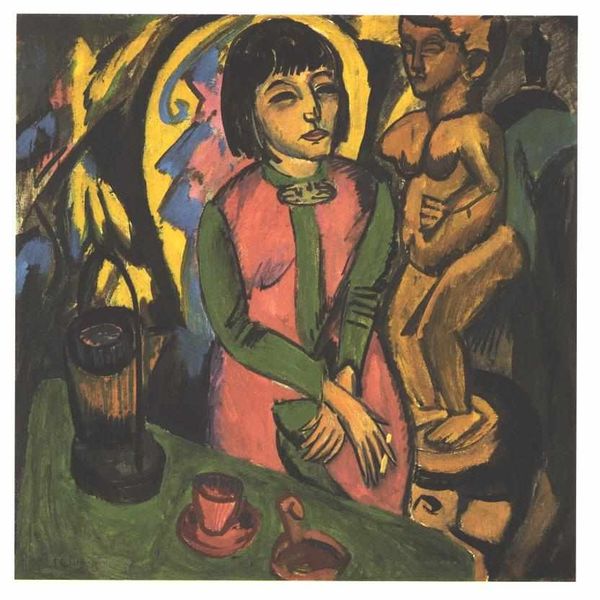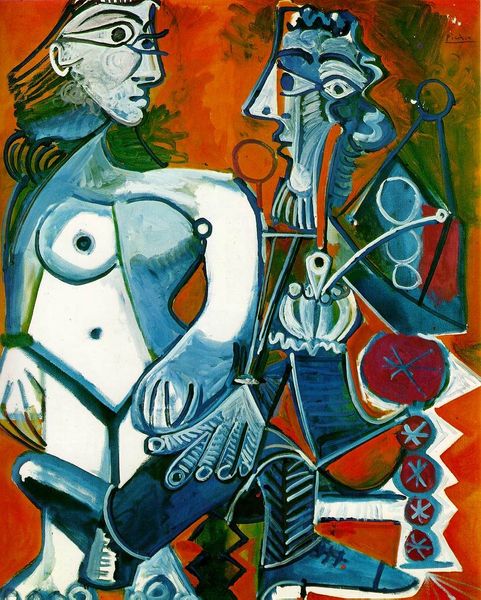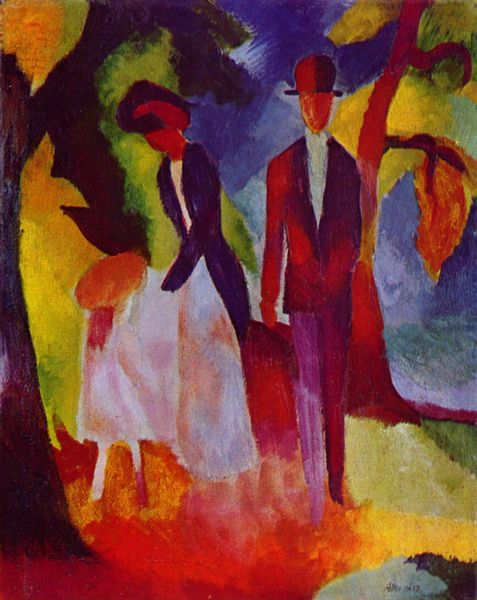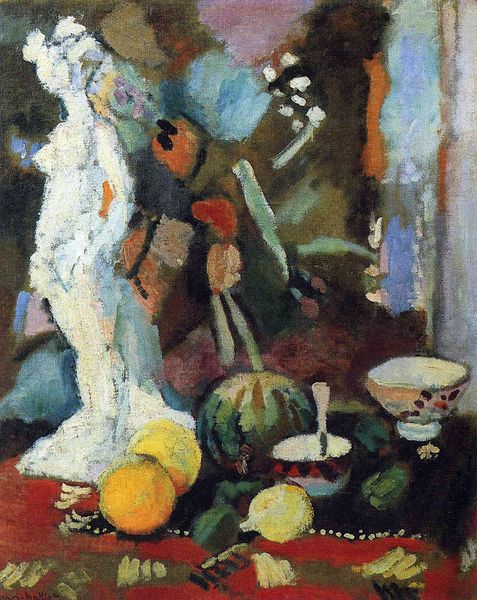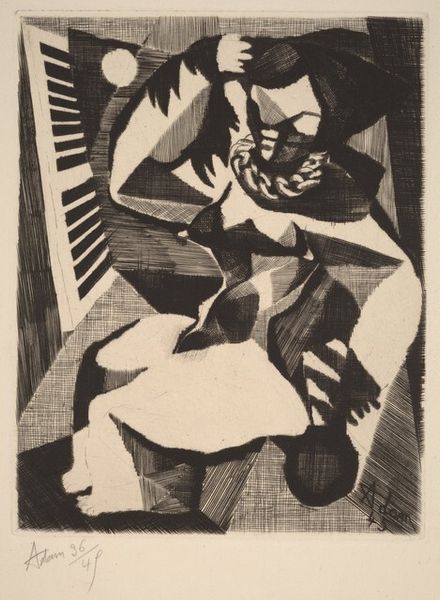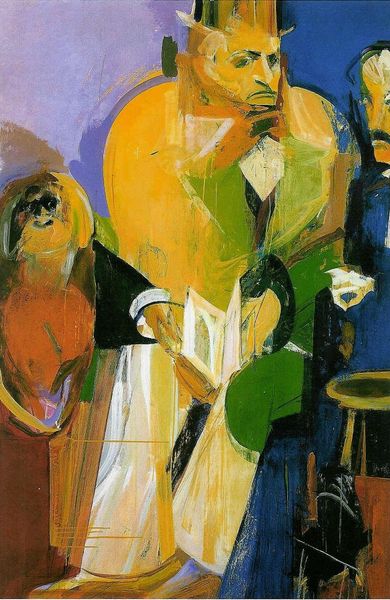
Dimensions: 53.98 x 34.93 cm
Copyright: Public domain
Editor: August Macke’s "Afternoon in the Garden," painted in 1913, feels both whimsical and a little unsettling to me, even though it depicts such a serene scene. The colours are vibrant but not naturalistic, and the forms are simplified. What do you see in this piece? Curator: I see a snapshot of bourgeois leisure, yet the imagery disrupts easy consumption. Consider the vibrant yet discordant colour palette – the intense blues clashing against the yellows and greens. Notice those dark, almost barbed brushstrokes scattered throughout. What emotions do those evoke, rather than calm and pleasant scenery? Editor: A sense of unease, perhaps? They almost feel like warning signs amidst the apparent serenity. What about the figures themselves? They seem almost like masks, their features so indistinct. Curator: Exactly. They lack individual identity. Think about the context: Europe on the brink of World War I. This garden scene, with its flattened perspective and stylized figures, reflects a deeper anxiety. Macke isn't simply depicting a pleasant afternoon. He is using symbols to expose the fragility of bourgeois comfort and the underlying psychological tensions of the era. What’s your interpretation of the dog depicted? Editor: It's rendered in a strange, almost electric blue. Dogs are often symbols of loyalty, but here…it's something else. A harbinger? Curator: Perhaps. It certainly defies traditional representations. So, the “Afternoon in the Garden” isn't just a landscape; it's a coded commentary, using colour, form, and symbolism to convey deeper truths about a society on the precipice. Editor: I see it now. The idyllic surface masks a more complicated and unsettling reality. I will never look at a garden scene the same way again. Curator: Indeed, the symbols whisper stories of their time, which in turn shape our understanding of ourselves today.
Comments
No comments
Be the first to comment and join the conversation on the ultimate creative platform.
